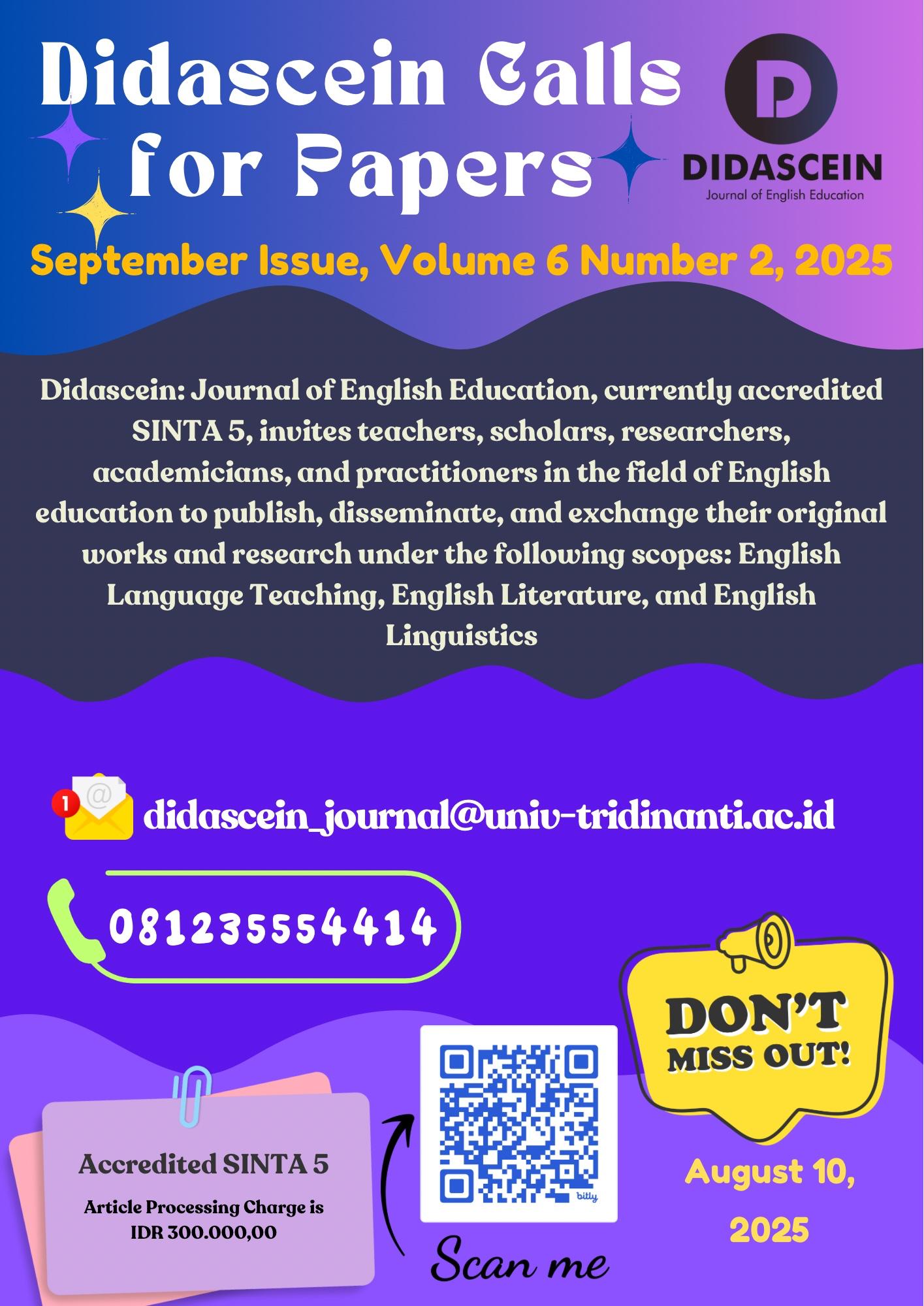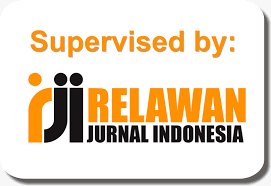Enhancing Tenth Graders' Reading Comprehension of Narrative Texts Using SQP2RS
DOI:
https://doi.org/10.52333/djoee.v4i2.164Keywords:
narrative text, SQP2RS technique, reading comprehension, enhancingAbstract
Reading is an essential skill that contributes significantly to the success of language learning; therefore, it should be prioritized. Reading skill needs comprehension to understand the context and get new information from the texts. To comprehend the texts, the readers need a strategy. This study aimed to find out whether or not there was any significant difference in students’ reading comprehension of narrative text between those who were taught by using SQP2RS and those who were not. This study used quasi quasi-experimental method to conduct the research. There were 72 students taken as samples using purposive sampling. In collecting the data, the result of the test was used as a pretest and posttest. To verify the hypothesis, the result of the Paired Sample T-Test found that the t-obtained was higher than 0.05. It indicated there was no significant improvement in students’ reading comprehension. Furthermore, the result of the independent sample t-test found that the t-obtained was lower than the t-table and the significance value of the Paired Sample T-Test was higher than 0.05. It indicated that there was no significant improvement in the tenth graders’ reading comprehension achievement. Meanwhile, the result of the Independent Sample T-Test showed that there was no significant difference in students’ reading comprehension between the experimental and control groups. Thus, it can be concluded that the SQP2RS strategy could not be an effective strategy to improve students’ reading comprehension of narrative text.
References
Af Ida, L. (2010). The Effect of Using SQP2RS Technique on the Grade XI Students’ Reading Comprehension Achievement at SMAN 1 Srono in the 2009/2010 Academic Year. (Unpublished master’s thesis). Jember University, Jember, Indonesia.
Brown, H. D. (2004). Language assessment: principles and classroom practices. New York: Longman.
Creswell, J. W. (2012). Educational research: Planning, conducting, and evaluating quantitative and qualitative research (4thed). New York: Pearson Education, inc
Fatimah. U. (2015). Studi Perbandingan Strategy PQ4R Dengan SQP2RS terhadap Prestasi Belajar Siswa Kelas VII SMPN 2 ALIAN. Retrieved From: http://ejournal.umpwr.ac.id/index.php/ekuivalen/article/viewFile/3221/3033
Hadi, M. (2014). The Impact of the Strategy of (SQ3R) in the Acquisition of the Female Students in Fifth Preparatory Class/ Literary Branch in Natural Geography. University of Babylon/ College of Basic Education Journal, 15(3), 137-161.
Huda, Miftahul. (2011). Cooperative learning metode, teknik, struktur dan model Penerapan. Yogyakarta: Pustaka Pelajar.
Kamalia (2016). Improving reading comprehension using the Survey, Question, Predict, Read, Respond, Summarize (SQP2RS) Strategy. English Education Journal, 7 (4), 549 – 564.
Khaghaninejad, M., Saadabadimotlagh, H., & Kowsari, S. (2015). Examining the Effects of Strategy-Based Instruction of Reading Passages to Undergraduate Iranian EFL learners. International Journal of English Language and Literature Studies, 4(2), 96–110.
Pardiyono.(2007). Bahasa Indonesia. Bandung: CV. Andi Offset Company Inc.
Patty, J. (2021). The Influence of using SQPR2RS (Survey, Question, Predict, Read, Respond, Summarize) Strategy To Improve Students’ Reading Comprehension. Jurnal Tahuri, 18(1), 55-65.
Qabaja, Z. M., Nafi, J. S. I., & Nimah, M. (2016). The effect of using the “SQP2RS via WTL” strategy through science context to 10th Graders’ reading comprehension in English in Palestine. International Journal of Education and Practice, 7, (26), 137-151.
Silfia, E, Ansyar, M.,&Zaim, M. (2013). Student’s difficulties in comprehending the analytical exposition texts at grade XI-A of the science program in SMAN 3 Sungai Penuh. Journal English language (ELT), 120-110.
Downloads
Published
How to Cite
Issue
Section
License
Copyright (c) 2023 Heru Setiawan

This work is licensed under a Creative Commons Attribution-NonCommercial-ShareAlike 4.0 International License.







